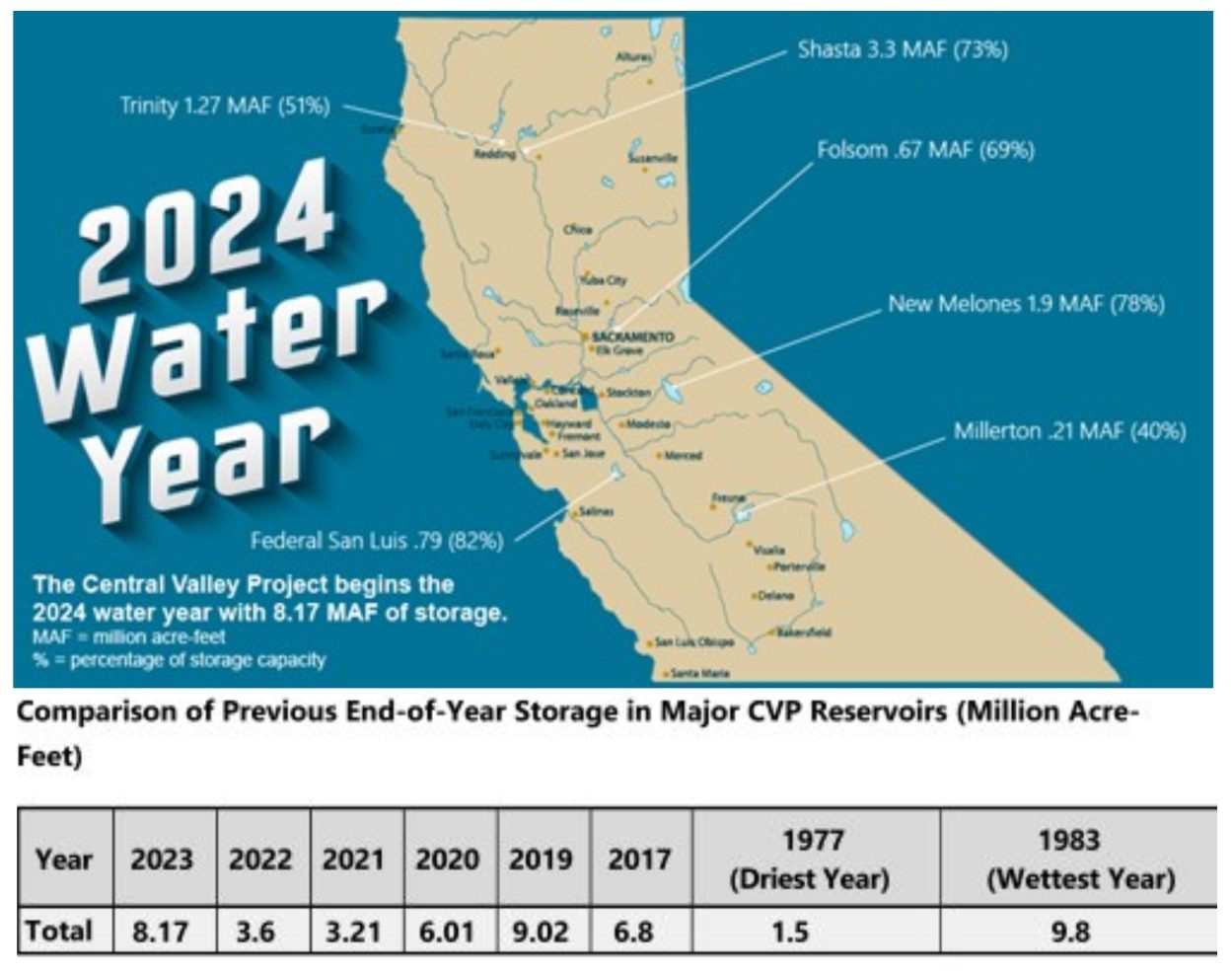October 5, 2023 — After experiencing a worrisome dry period, the Central Valley Project (CVP) reservoirs managed by the Bureau of Reclamation are now filled with 8.17 million acre-feet of water, thanks to a wet winter in 2023.
“We could not have asked for better conditions in 2023 and the rain and snow were a welcome reprieve after the driest three-year stretch ever,” remarked Reclamation Regional Director Ernest Conant in the Bureau’s press release published yesterday.
Turning the Tide on California’s Drought.
From December 2022 to March 2023, California witnessed a series of at least 12 powerful atmospheric rivers, bringing much-needed rain and snow to the region. As a result, the state saw relief from the ongoing drought, with no regions experiencing exceptional or extreme drought for the first time since 2020.
Water Availability and Usage Increases.
The abundance of water early in 2023 allowed the Bureau of Reclamation to announce the availability of Section 215 water, facilitating those eligible to access temporary water service contracts.
Reflecting the positive changes in water conditions, the initial allocation for the Central Valley Project (CVP) stood at 35% in February. By March, significant reservoirs like the Shasta Reservoir and San Luis Reservoir reported 81% and 97% of capacity, respectively. By April, the water supply allocations for the CVP were raised to a full 100%.
Regional Director Conant cautioned , “While we are pleased to start the 2024 water year with reserves, we know firsthand that California’s changing climate is unpredictable and dry years will undoubtedly re-occur. Reclamation will continue to manage water supplies accordingly and as always, encourage conservation and wise use of our water resources.”
, “While we are pleased to start the 2024 water year with reserves, we know firsthand that California’s changing climate is unpredictable and dry years will undoubtedly re-occur. Reclamation will continue to manage water supplies accordingly and as always, encourage conservation and wise use of our water resources.”
Central Valley Project: A Vital Water Source.
Running from October 1 to September 30 each year, the water year sees the CVP reservoirs, including Trinity, Shasta, Folsom, New Melones, Millerton, and the federal share of San Luis Reservoir, play a pivotal role. The CVP is California’s largest irrigation water source, typically catering to 3 million acres of farmland in the San Joaquin and Sacramento valleys. Beyond irrigation, the CVP supplies municipal water to millions, supports the San Francisco Bay Area’s industries, and plays a critical role in environmental, wildlife, and fishery restoration. This includes provisioning water to 19 wildlife refuges in the Central Valley and generating hydroelectric power.
For in-depth storage details, interested parties can check www.usbr.gov/mp/cvo and for more insights on the 2022 water year, www.usbr.gov/mp/drought
and for more insights on the 2022 water year, www.usbr.gov/mp/drought is available. Image credit: US Bureau of Reclamation press release
is available. Image credit: US Bureau of Reclamation press release .
.


Leave a Reply